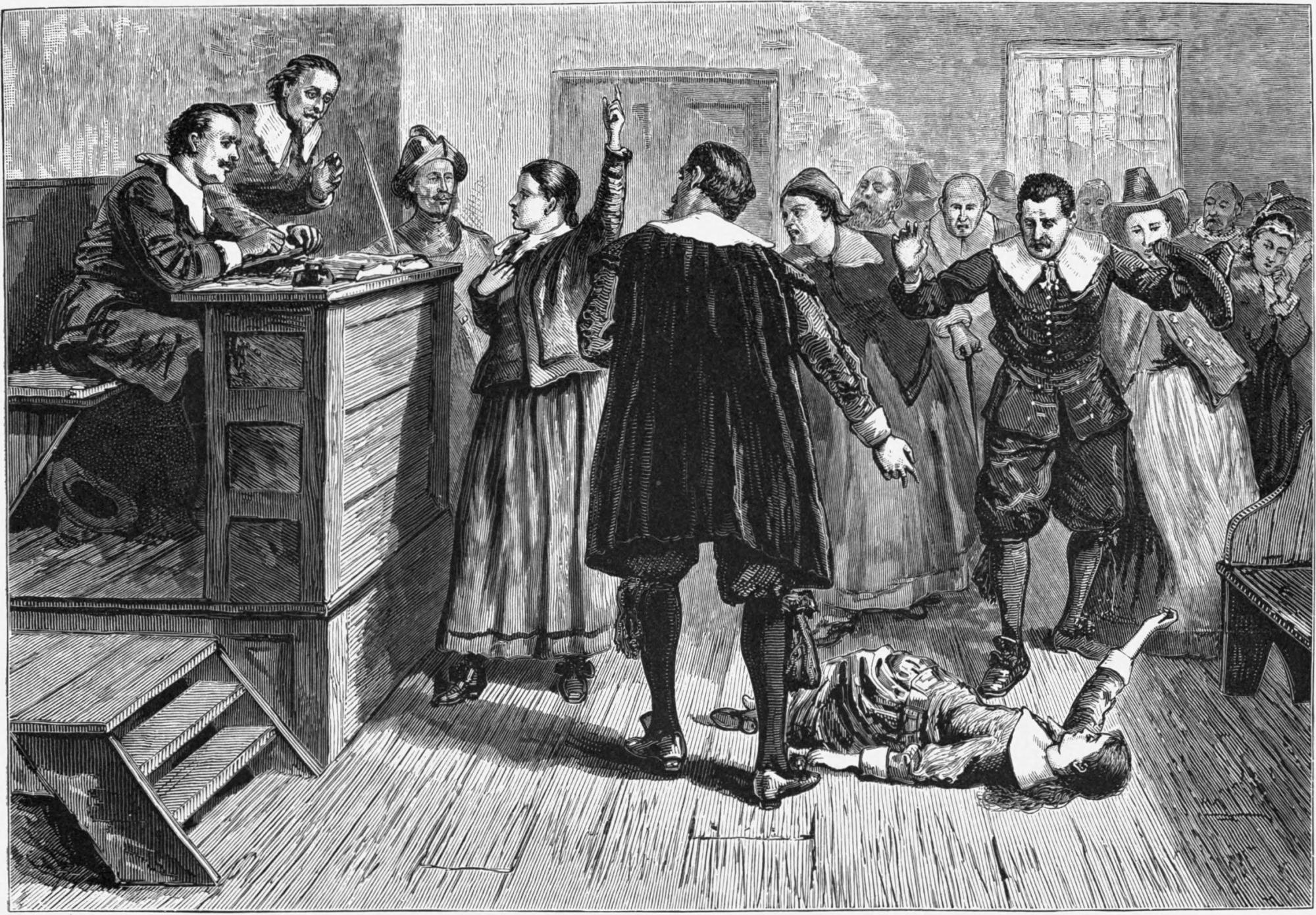Created by Cole Sherwin on Sat, 05/04/2024 - 18:12
Description:
Above is an engraving made in 1876 representing Mary Walcott during one of her trials. Mary Walcott was a main accuser during the trials, she continued these accusations from nearly the start of the trials until the end (“Mary Walcott Home”). During the time of Salem Witch Trials, there was severe panic with the unknown, similarly to “The Minister’s Black Veil” written by Nathaniel Hawthorne. In both scenarios, townsfolk are swept into mass hysteria, due to the unknown. In the image, they are unsure of what is causing all of these “unexplainable” scenarios. Thus, forcing many to go to trial for what is deemed as witchcraft. Hawthorne states: “But that piece of crape, to their imagination, seemed to hang down before his heart, the symbol of a fearful secret between him and them” (“Twice-Told Tales”). This references the cloud of uncertainty in which the black veil hides. As with the trials, many of the residents of Salem and neighboring towns were afflicted with the problem of the uncertainty of what is going on. Many claimed of mysterious illnesses or death of livestock and blamed other townsfolk for what is happening to them. Even ghosts “pinching” people were used as a form of evidence, and enough to accuse one of witchcraft during the trials (Linder).
Another similarity between the witch trials and “The Minister’s Black Veil” is the secrecy. Hawthorne mentions “The subject had reference to secret sin and those sad mysteries which we hide from our nearest and dearest, and would fain conceal from our own consciousness, even forgetting that the Omniscient can detect them” (Twice-Told Tales). The black veil holds a level of secrecy to it, one of the many reasons in which people were so skeptical. In the Witch Trials, people were always on edge and almost had to keep a secretive life. If anything was deemed out of the ordinary, they were most likely going to be accused of witchcraft and sentenced to be hanged. Even the accusers had to be secretive. If they were not, someone may have accused them of witchcraft before they were able to do so to someone else. Both situations are teeming with similarities, resulting in a fear of the unknown and secrecy.
“Mary Walcott Home, Site Of.” Salem Witch Museum, 12 Jan. 2021, salemwitchmuseum.com/locations/mary-walcott-home-site-of/.
Linder, Doug. “The Witchcraft Trials in Salem: A Commentary.” An Account of the Salem Witchcraft Investigations, Trials, and Aftermath., law2.umkc.edu/faculty/projects/ftrials/salem/SAL_ACCT.HTM. Accessed 4 May 2024.
“Search Media.” Wikimedia Commons, commons.wikimedia.org/w/index.php?search=Salem%2Bwitch%2Btrials&title=Special%3AMediaSearch&go=Go&type=image. Accessed 4 May 2024.
“Twice-Told Tales.” The Project Gutenberg eBook of Twice-Told Tales, by Nathaniel Hawthorne, www.gutenberg.org/files/13707/13707-h/13707-h.htm#chap04. Accessed 4 May 2024.


